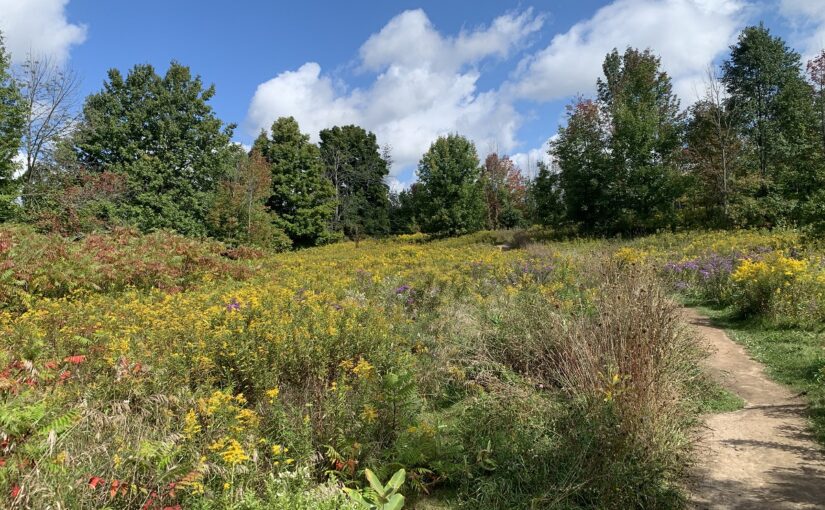Planning a trip to Forks of the Credit Provincial Park?
We want to let you know the park may look at bit different from last time because of an exciting grassland restoration project!
At first glance, this project might take you by surprise
If you were trying to capture the concept of habitat restoration in a single action or symbol, what would it be?
Did you think of planting a tree?

You’re not alone. Planting trees has become a common shorthand for ecological work.
But while reforestation is important conservation work, and happens commonly in our parks (here are some recent examples from Killarney and Sandbanks), the fact is: not all at-risk ecosystems are forests.
Our parks work as a province-wide network of protection, safeguarding a vast representation of ecosystems, ranging from coastal dunes to alvar, forests to wetlands.
And at Forks of the Credit, we’re working to restore and protect grassland habitat.
Forks of the Credit’s grasslands
Grasslands are sunny, open areas filled with small plants like native grasses and wildflowers. The plants’ deep roots prevent erosion, improve the soil, and store carbon underground. Wildflowers that bloom from spring to fall support pollinators like bees and butterflies. Grasslands are places for small mammals to forage, crickets to chirp, and ground-nesting birds to raise their young.
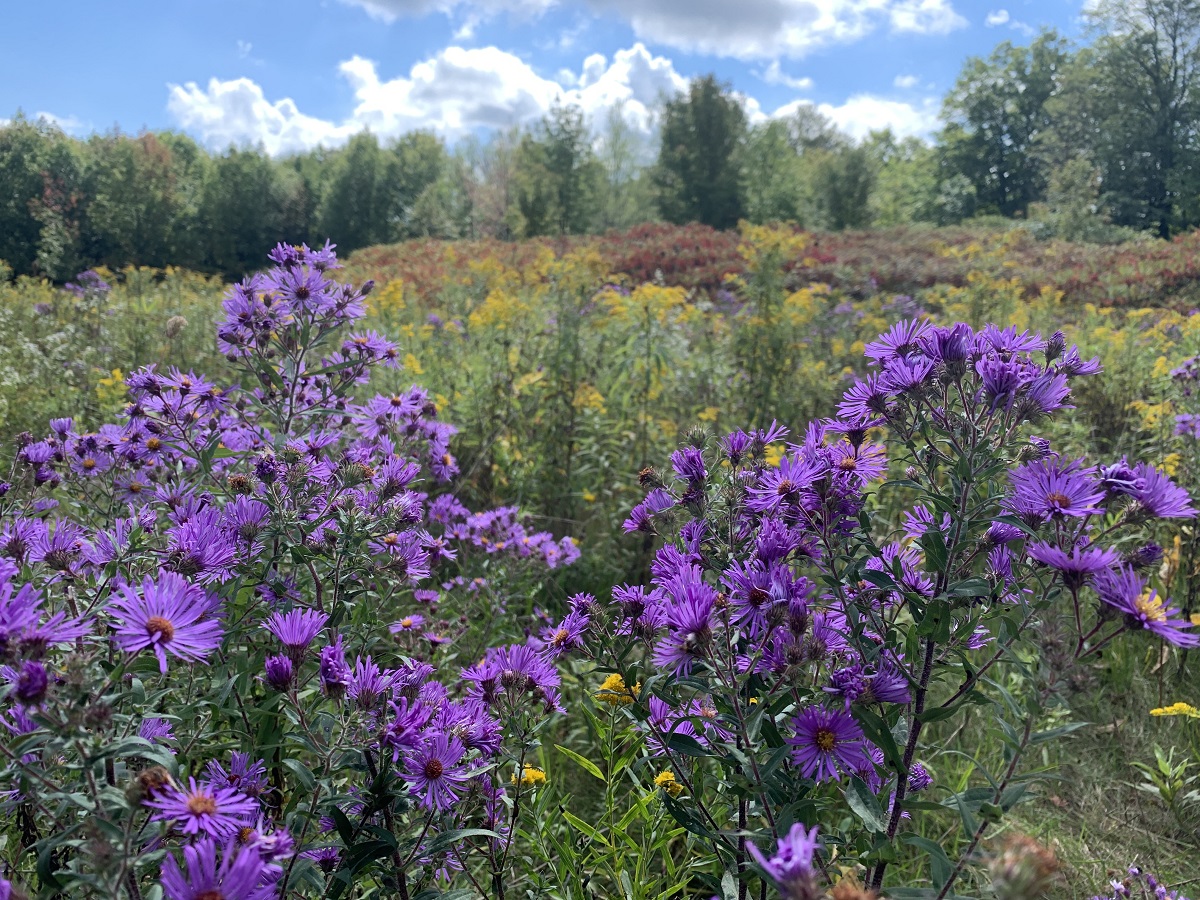
It is important for parks like Forks of the Credit to protect different habitat types. Even species that spend most of their time in the forest may sometimes need to visit a grassland to find food, warm up in the sun, or meet other needs. A greater diversity of habitats supports a greater diversity of species and makes Forks of the Credit a healthier park.
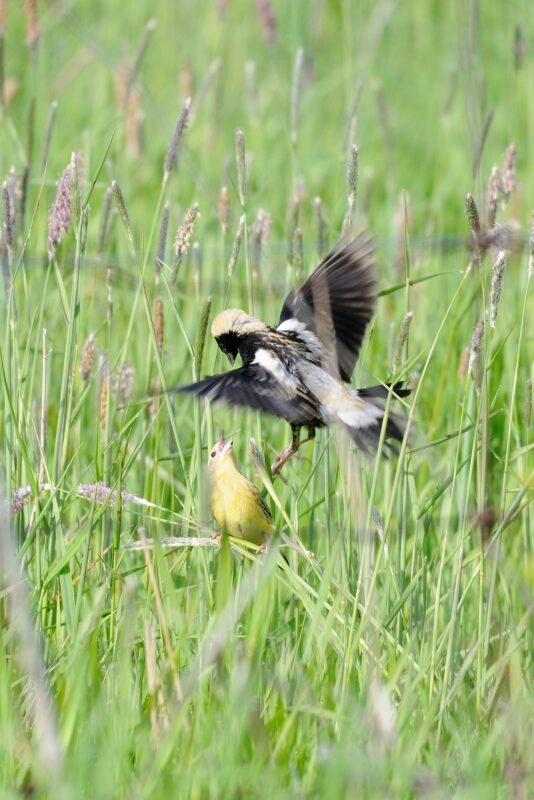
For instance, Forks of the Credit is home to one of the most sizeable populations of Clay-coloured Sparrow in the region.
Many species at risk, such as Bobolink, Monarch Butterfly and Eastern Meadowlark, as well as regionally rare species like Frost Aster and Smooth Beardtongue, make their homes in grassland habitat at Forks of the Credit.
Or, at least, they used to.
Twenty years ago, Forks of the Credit’s grasslands were larger and healthier, and were home to thriving bird and butterfly populations.
But over the past decades, we’ve been hearing the “bark” of some encroaching species. They’re “branching” in and overshadowing the shorter grassland vegetation, “leafing” no room for other species.
Wait, are you saying the ecosystem is under threat from invasive trees?!
We are indeed.
It turns out the solution to this challenge involves — not tree planting — but tree removal. (We did warn you that this project might take you by surprise!)
Over the past 10 years, the park’s grassland habitat has been under siege from invasive and/or encroaching trees, shrubs, and vegetation.
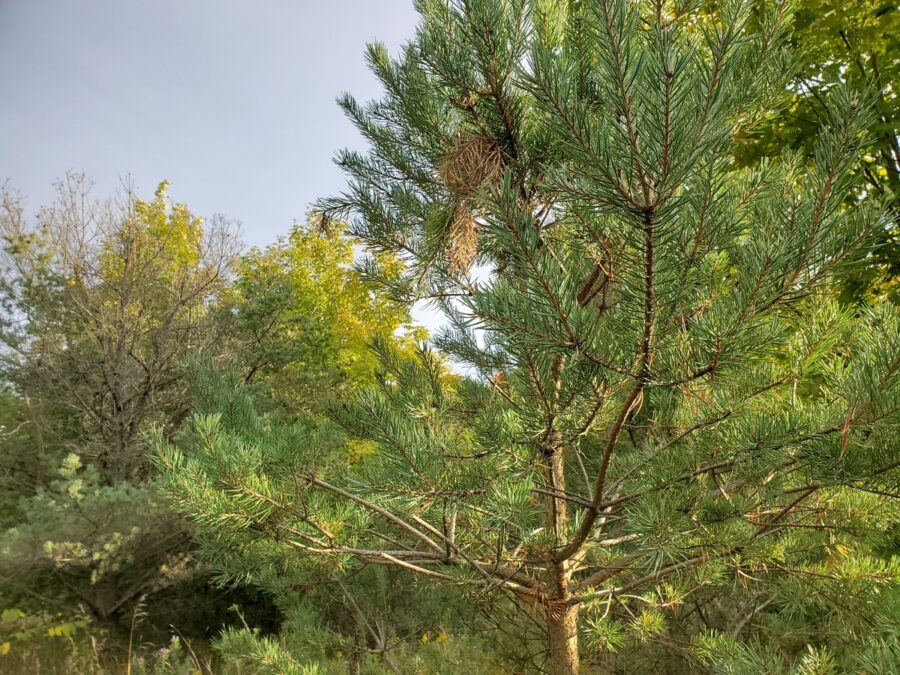
Some of those plants are non-native invasive species, like Scots Pine. Others are just opportunistic native species — like poplars and White Ash — that are invasive to this particular ecosystem.
And it’s not just trees. Invasive plants like honeysuckles and Dog-Strangling Vine are getting in on the act too.
These invasive trees, shrubs, and other vegetation are choking out the grassland plant species. Left alone, they’ll overwrite the entire ecosystem.
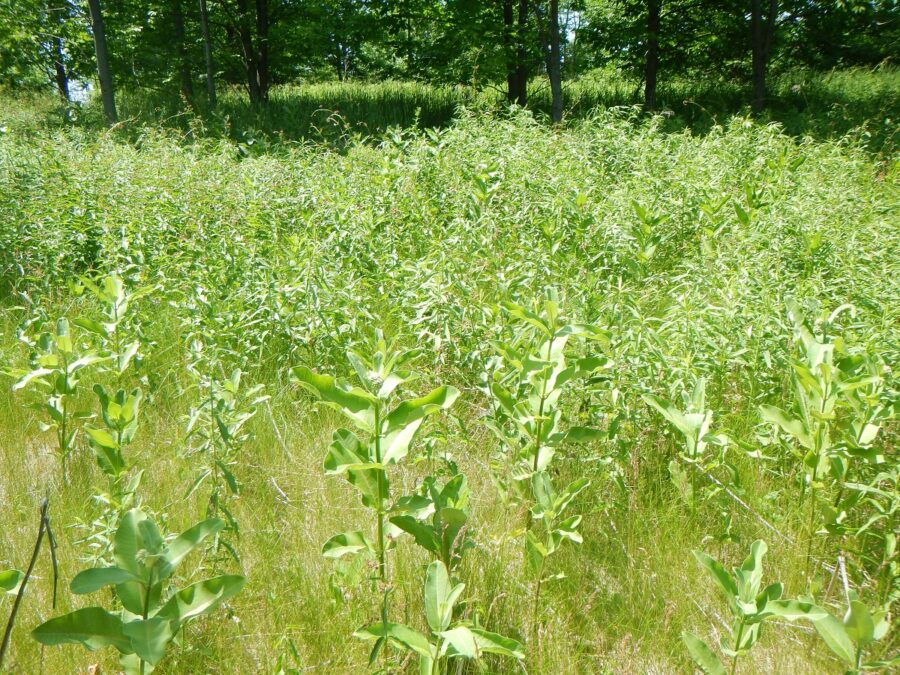
Already, many park spaces are no longer suitable habitat for our at-risk Bobolink and Eastern Meadowlark populations.
Without action, these ecologically significant grasslands will eventually be lost.
Shouldn’t we just let nature take its course? Why interfere?
Provincial Parks contain some of rarest and ecologically important ecosystems which have been mostly lost outside of protected areas. Sometimes, our best option is to let ecosystems evolve without our interference. And sometimes, it’s important we step in to help preserve overall biodiversity.
Most of Ontario’s natural grasslands were lost in the first waves of European colonization, since they were much easier to farm and develop compared to forests and wetlands. Projects like this one at Forks of the Credit provide an opportunity to restore and maintain an ecologically important part of our natural heritage, one that supports a long list of species that rely on grasslands for survival.
For example, historically, natural wildfires or Indigenous fire stewardship rejuvenated grasslands and prevented the sprawl of invasive tree species.
But Forks of the Credit is a provincial park, and fire management hasn’t been practiced here.
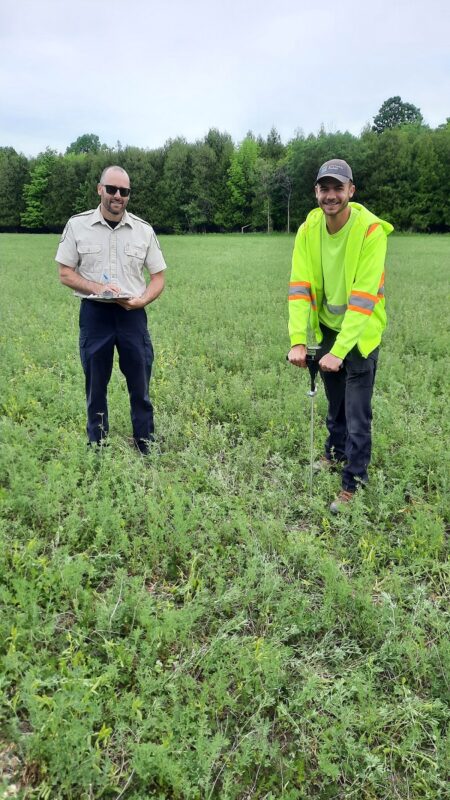 We try to work in partnership with nature to protect biodiversity, so we want to make sure we’re giving back to these grasslands.
We try to work in partnership with nature to protect biodiversity, so we want to make sure we’re giving back to these grasslands.
Our park staff and local field naturalist clubs partner up regularly, working with hand tools to remove encroaching invasive shrubs and tree species.
But in a few areas, the fast-growing invasive tree species have sprung up and become bigger than staff and volunteers can remove by hand.
This year’s restoration project is a larger and more focused operation to continue this important conservation work.
A concentrated restoration push
Work is underway to restore up to 20 ha of grassland habitat in the park this year!
Here’s how we’ll do it:
Research
This part’s already been completed. Our staff have done lots of park surveys to ensure that larger trees along trails — good habitat for birds, bats, racoons, and other park species that use older cavity trees — are flagged and protected.
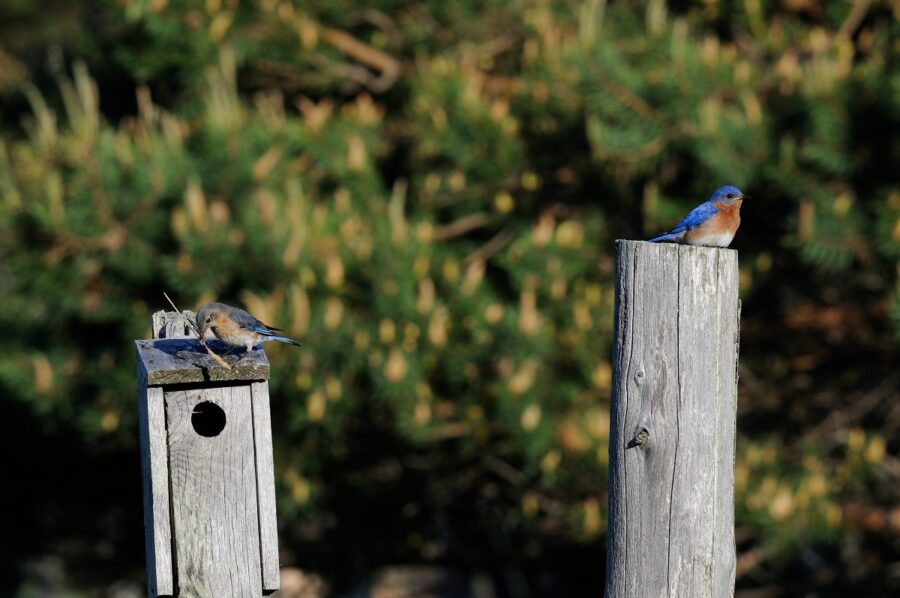
We’re also being very careful about the timing. Tree removals will occur outside of the breeding bird and bat maternity roosting windows.
Removal of encroaching trees and vegetation
Over the winter, crews will come in with small excavators and chainsaws to remove the invasive trees and prepare the area for seeding. Most of trees will be small and scrubby (mostly small ash and invasive Scots Pine).
They’ll also work within open areas of grassland, removing the encroaching thicket and invasive plants like honeysuckle.
And don’t worry that the felled vegetation will go to waste.
Brush piles for wildlife will be created from some logs and branches cut during the project. Most other woody debris will be chipped and dispersed through the park. These features will create additional nesting, feeding, and shelter sites for a variety of park reptile and mammal species.
Re-seeding
So this is a restoration story with no tree planting, but we are sowing seeds for many other amazing plants!
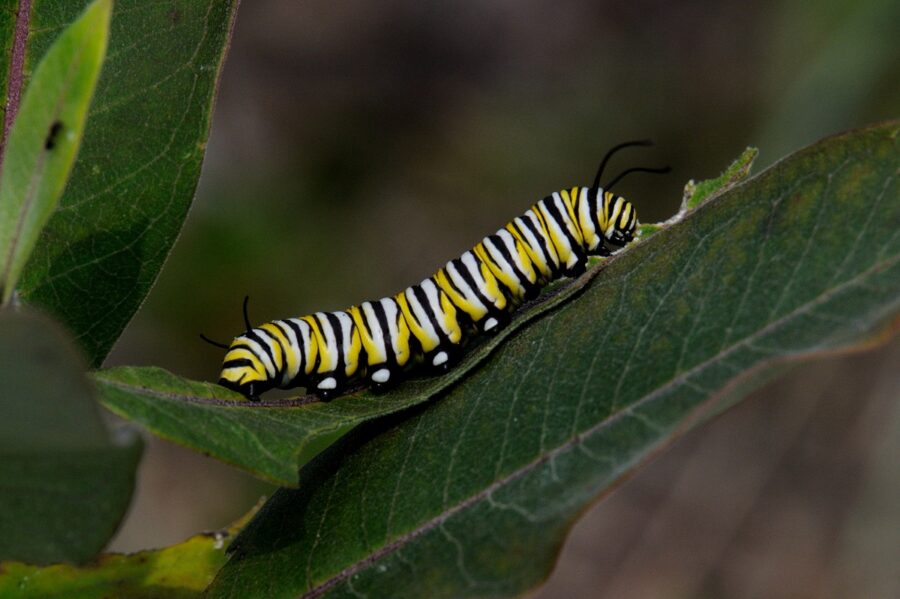
This is a critical part of the process because we want our meadows to be ready to welcome back migrating birds and butterflies when spring comes.
How will the restoration work affect my visit?
We won’t be closing our gates for this restoration, even over the winter, but we do want visitors to prepared for some changes.
If you visit us in February or March, you might find the trails a bit muddy or disturbed from equipment rolling in. (Work crews will take a difference entrance to the park so as not to interfering with main parking lot area.)
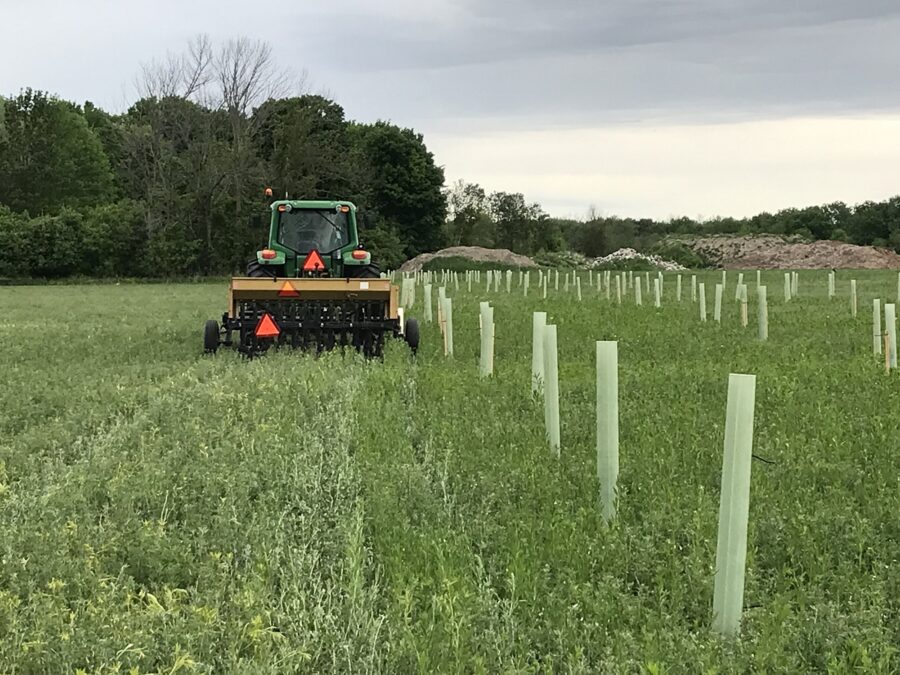
We’ll be working to remove some thicket root systems, and we’ll also need to expose some bare soil for seeding. This will improve the diversity of our grassland by spring, but may look sparse until the new plants come up.
You may see machinery and chainsaw staff working to remove tree species. This work will take place away from hiking trails, though you may see them in the distance as your wander.
Likewise, whether winter, spring or summer, you will see fewer trees in these project areas next time you visit.
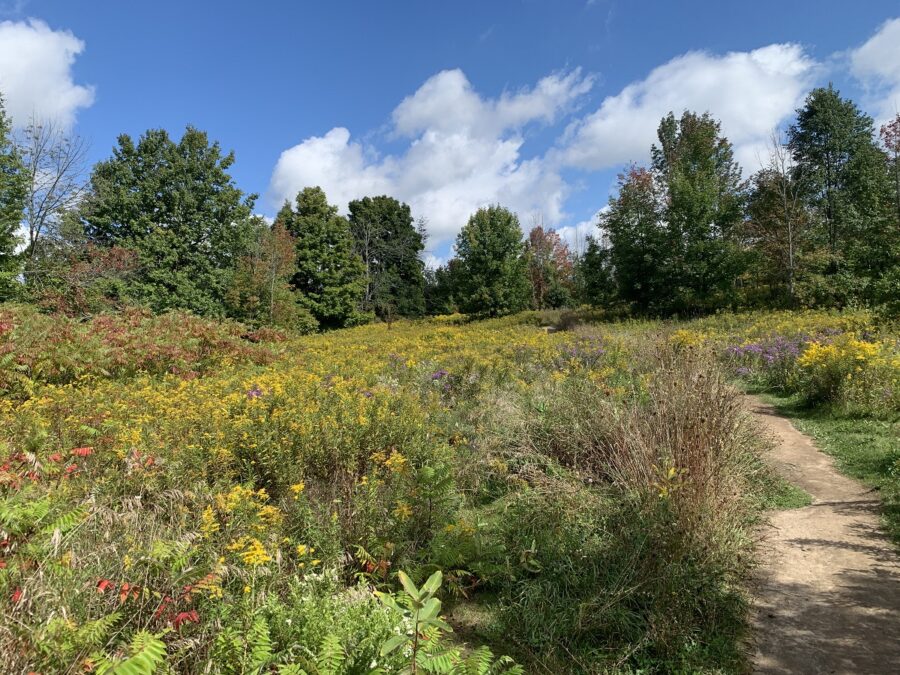
The Bruce Trail, Meadow Trail, and Trans Canada Trail box the restoration site in. If walking these trails, you may see downed trunks. Mostly it will just feel a bit more open, due to the removal of trees.
That said, with the removal of these trees, we’ll see a natural “green-up” of our open meadows come spring. We also expect the return of grassland breeding bird species, butterflies and other pollinators, and lovely plants and wildflowers.
Thank you for celebrating with us!
Our team at Forks of the Credit has long history of protecting these grassland habitats and the species that live there.
We’re so thrilled to share this amazing project with everyone who loves Forks of the Credit. It’s a wonderful victory for the biodiversity of our parks!
